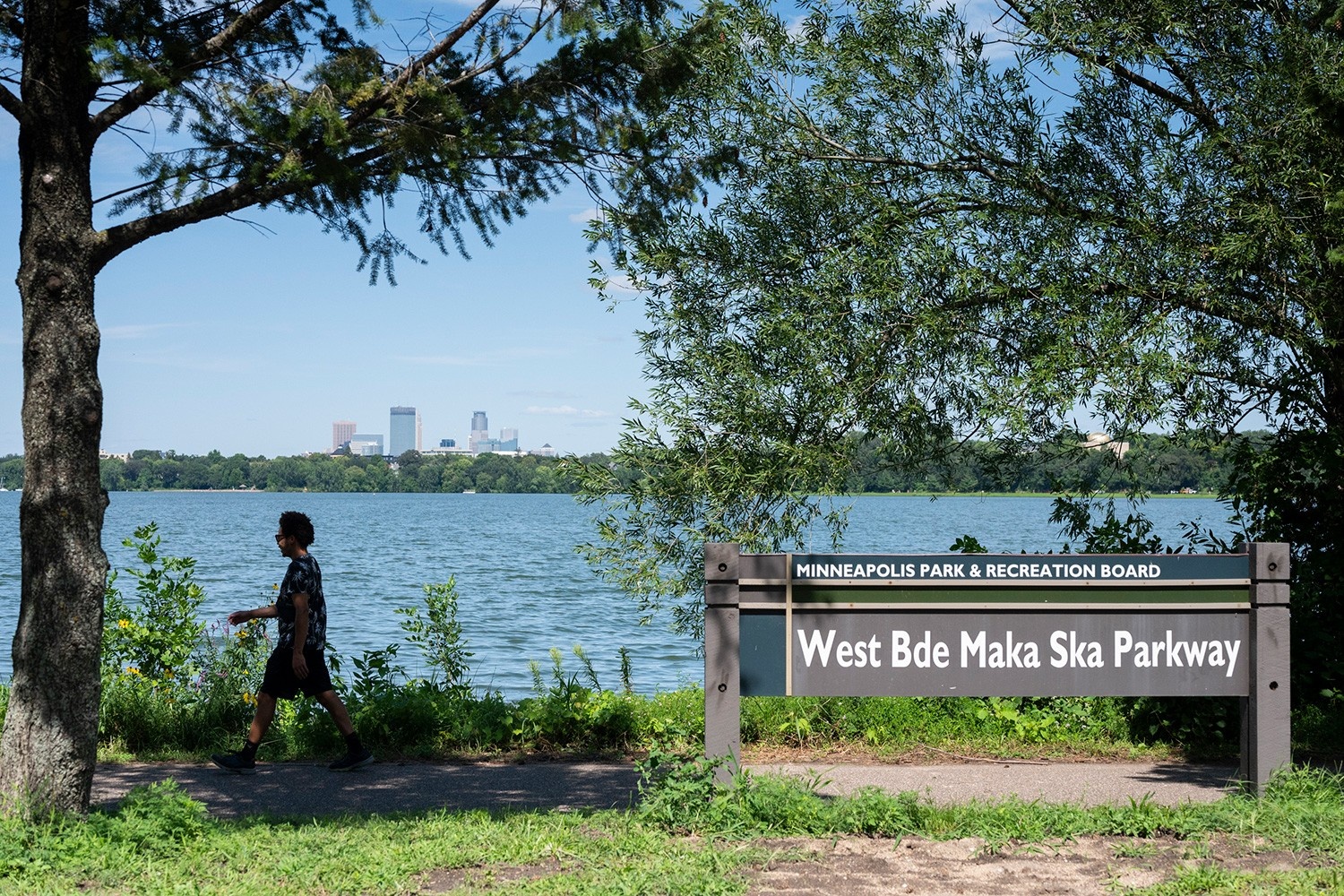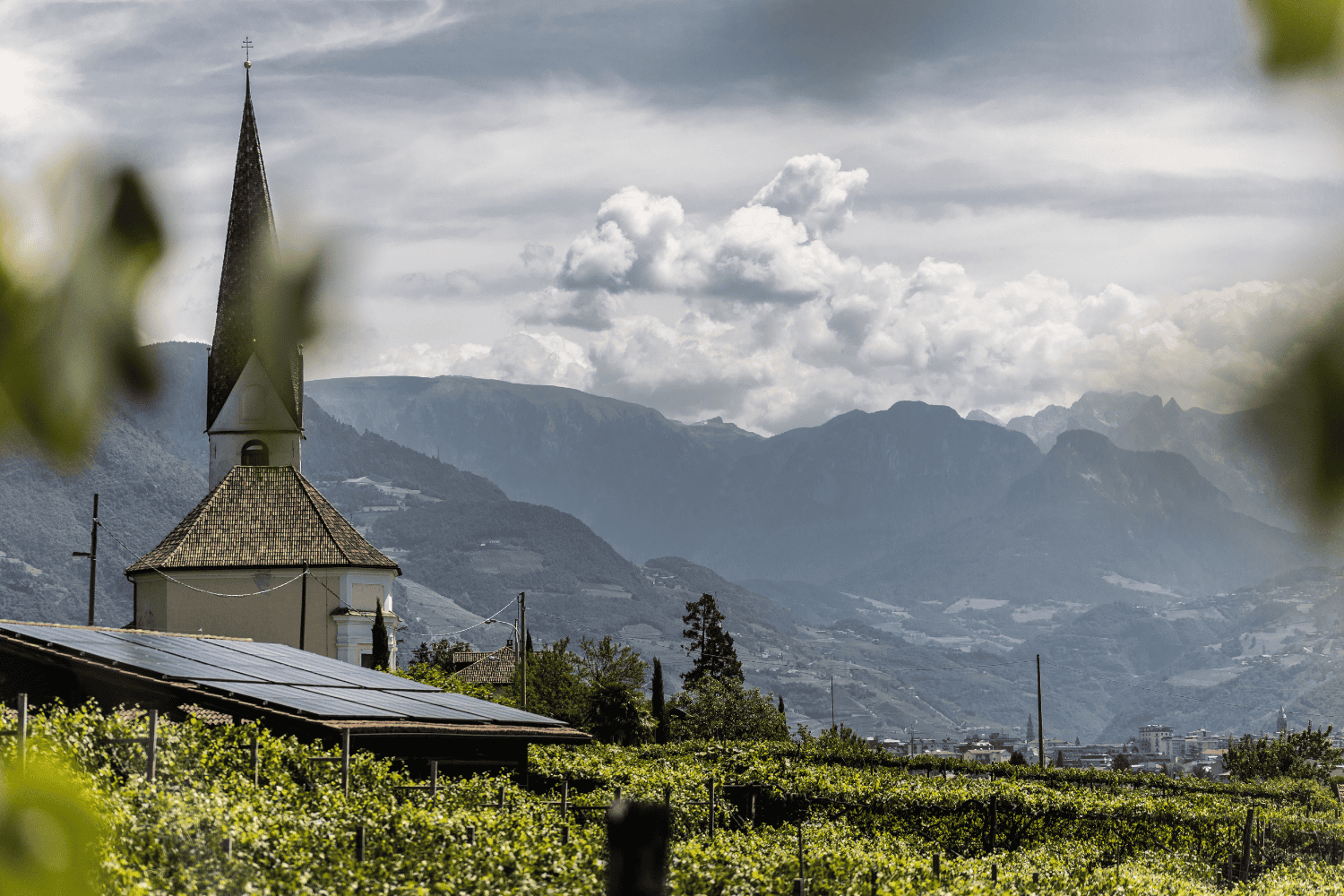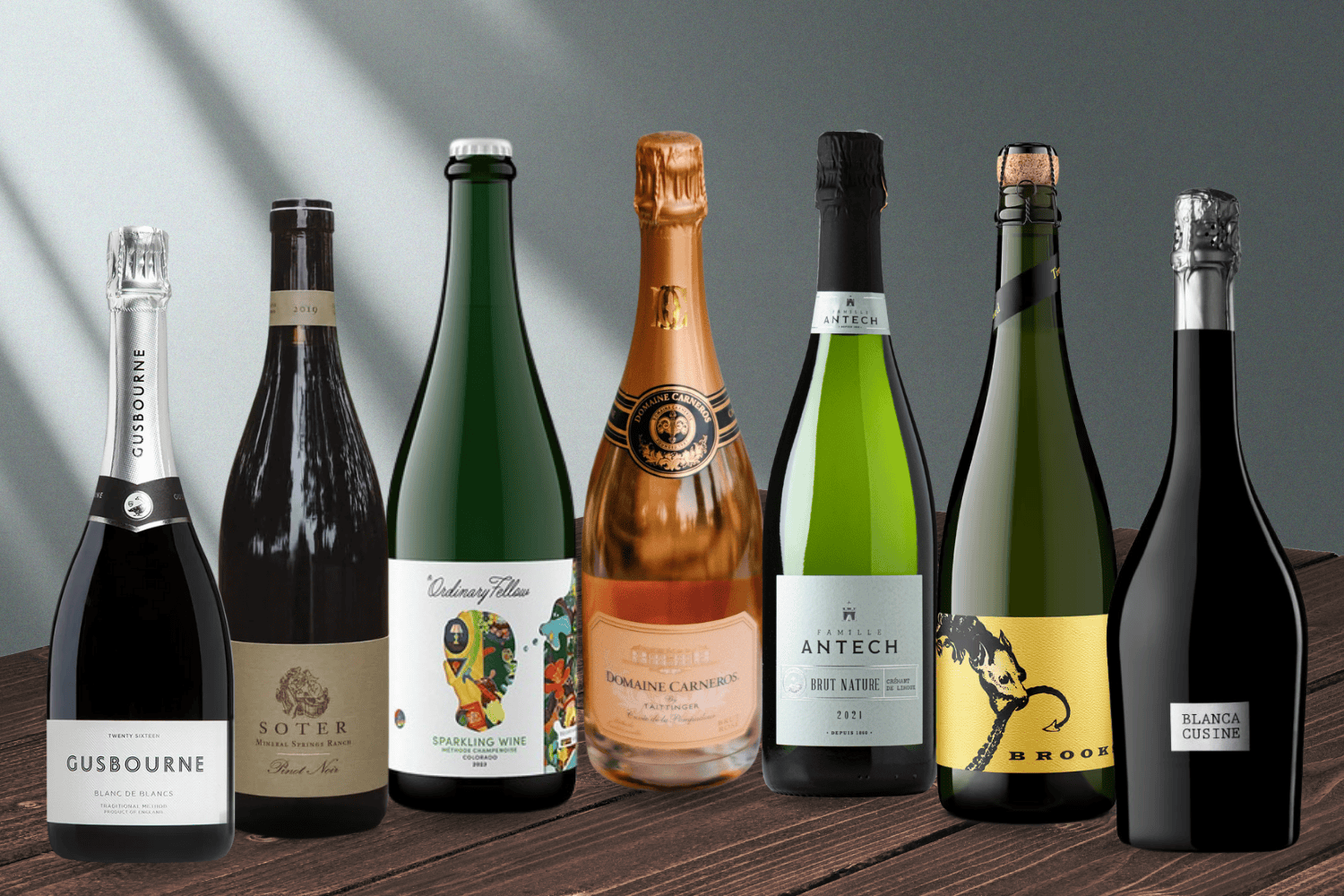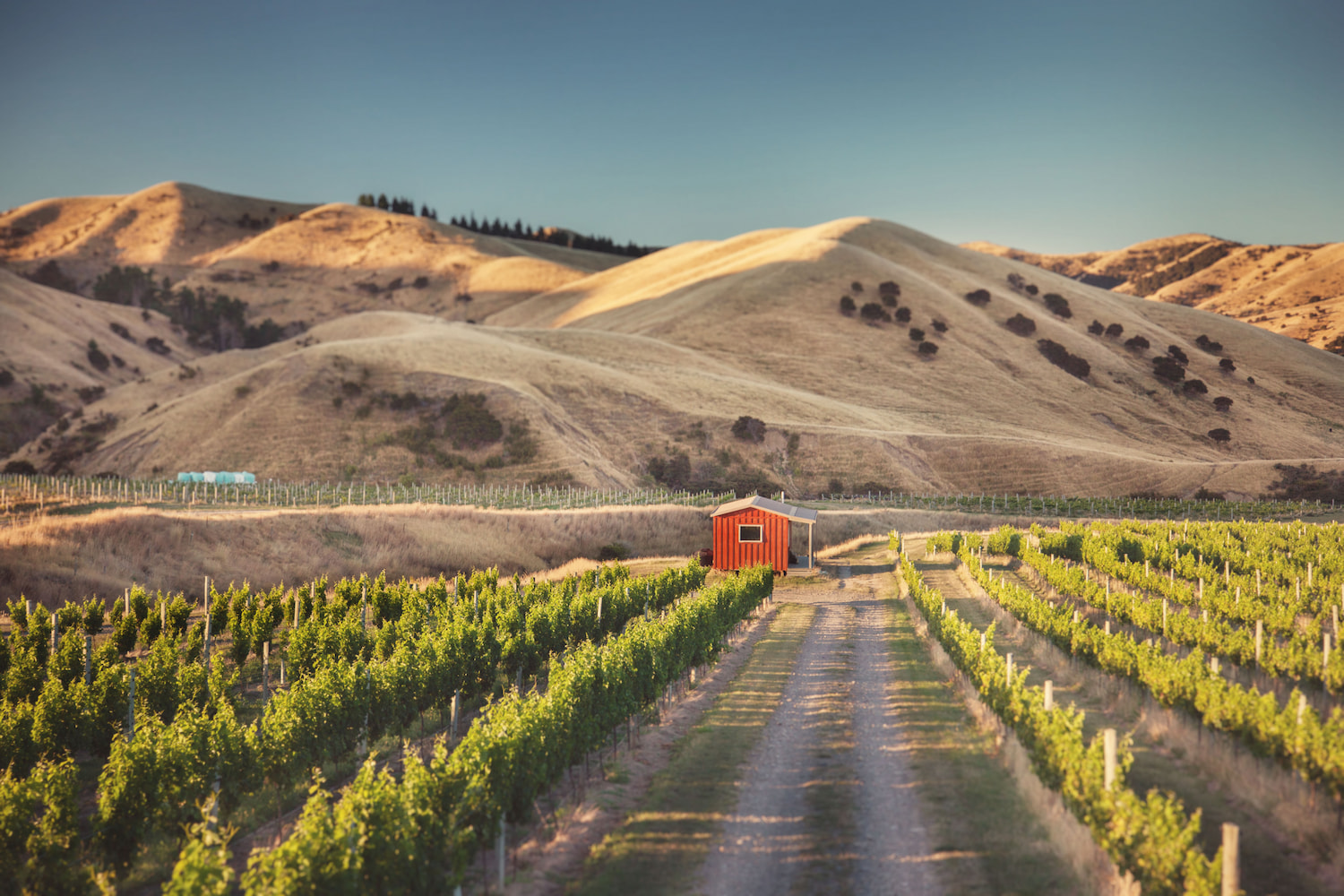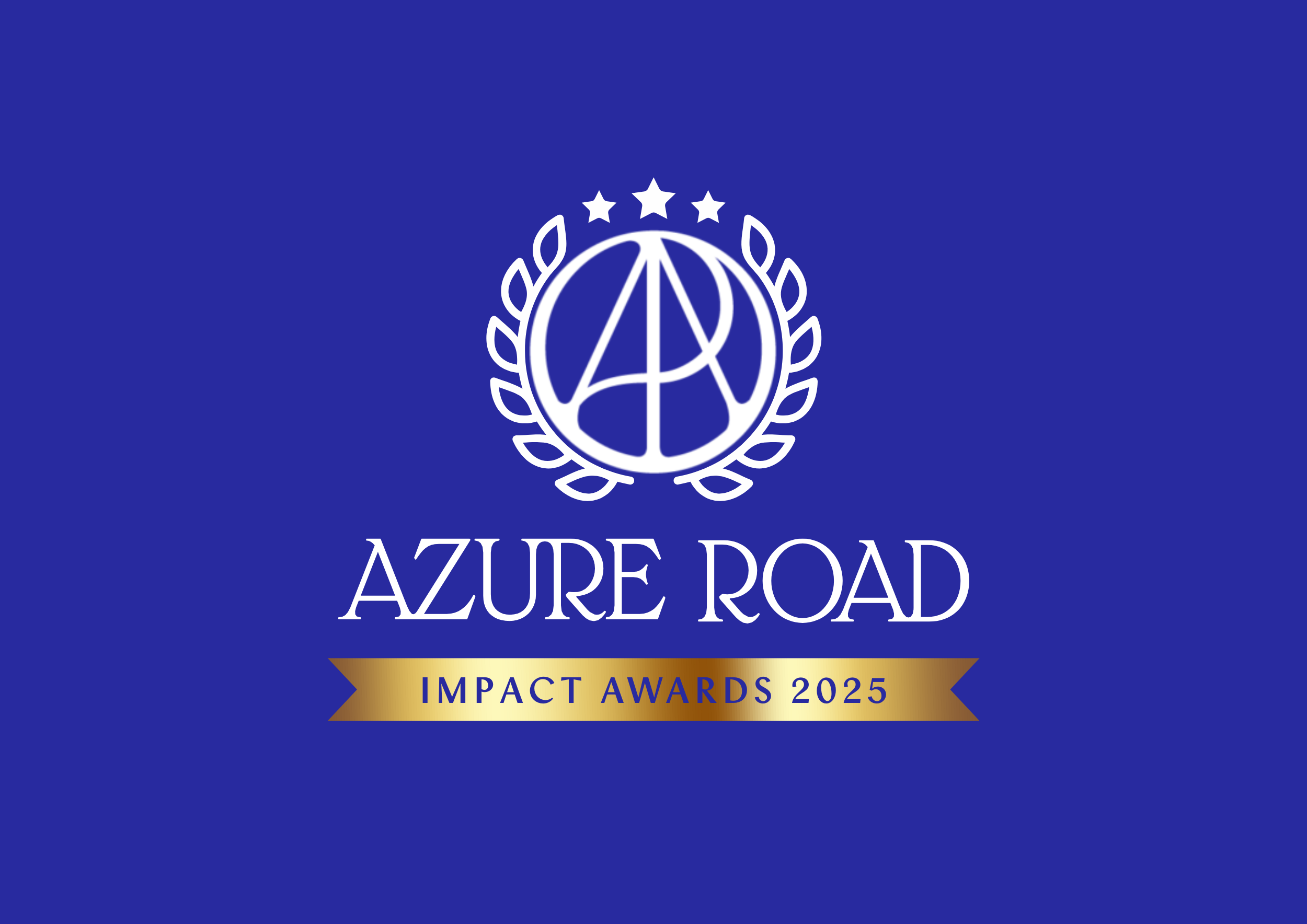North Stars:

Diversity and Inclusion

Heritage Value

Wildlife Ecosystems
“This is a significant and powerful way for destinations to foster a deeper, more accurate understanding of local history.”
For the Indigenous people of America, a name isn’t just a recognition of the original inhabitants; it’s a way to connect with generations of history. In Macon, new street signs in Muscogee (Creek) and English renew the long-broken ties following the tribe’s removal on the Trail of Tears over a century before.
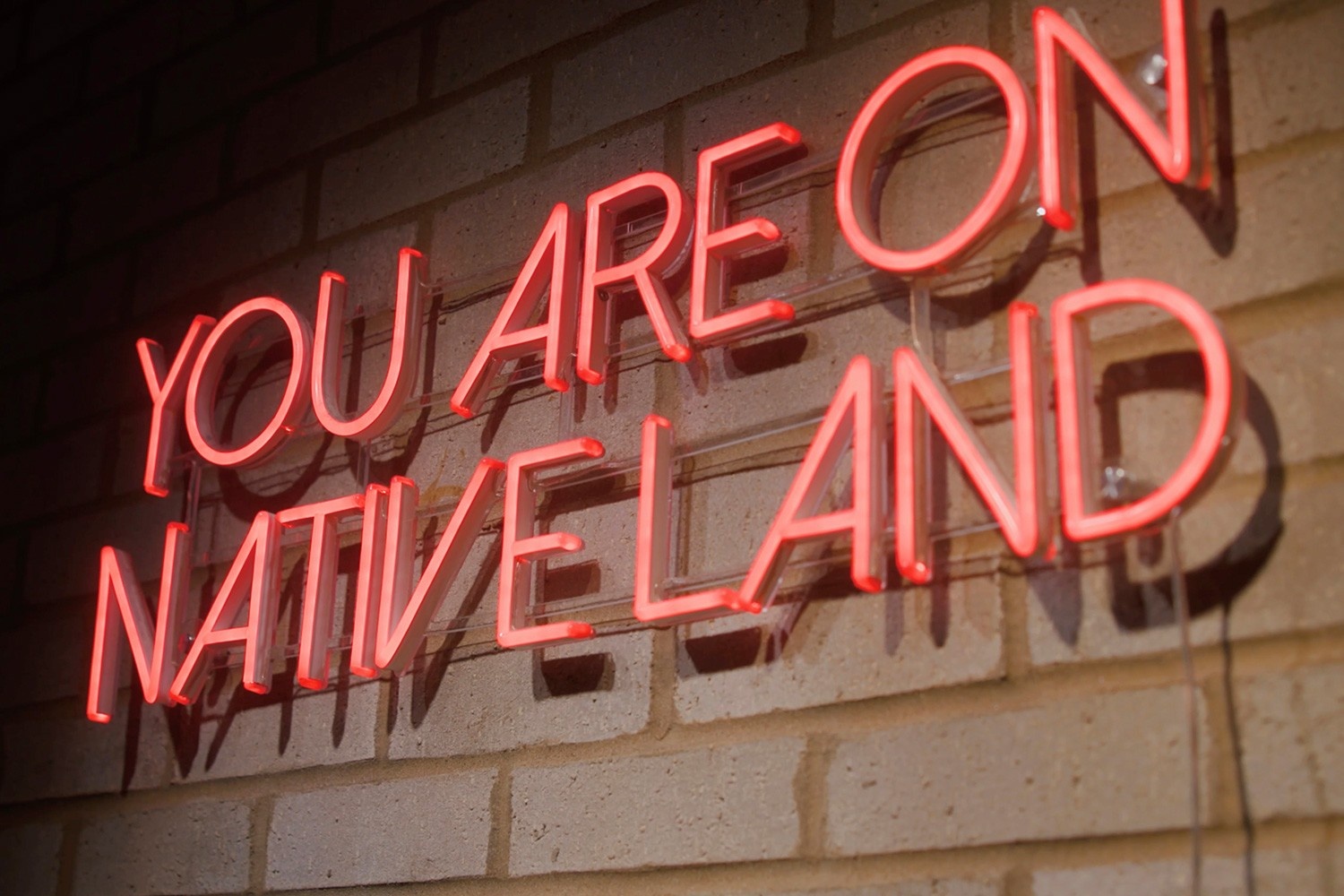
You Are On Native Land sign at Owamni. Courtesy of Explore Minnesota.
Getting a table at Owamni is one of Minneapolis’ hardest reservations. Set alongside the mighty Mississippi River, this James Beard Award-winning restaurant has created quite a buzz since opening as the nation’s first Indigenous restaurant in 2021. Helmed by Indigenous foodways and rights advocate Chef Sean Sherman of the Oglala Lakota band of the Lakota people, Owamni (which means “place of the falling, swirling water” in Dakota) introduces diners to decolonized cuisine: meals made solely with native ingredients that predate colonization. As guests tuck into bison ribeye or seasonal salads, they get a taste of how local Indigenous groups ate before the arrival of Europeans. Upon entering, a red neon sign sends out a message: “You Are On Native Land.”
This sort of reminder, that all Americans are living on Native land at all times, now stretches beyond boilerplate land acknowledgments. Across the country, many cities, towns, and destinations have started restoring the original Indigenous names to landmarks, streets, and places.
Minnesota, where Owamni is located and home to 11 federally-recognized Indigenous groups, is just one example. Just outside Minneapolis sits Bde Maka Ska, the largest lake in the city and a popular destination for boating, paddling, cycling, and walking. Once known as Lake Calhoun, the lake was restored to its original Dakota language name, meaning “white earth lake,” in 2018. Now, signs around the lake proudly proclaim the lake’s true name, and informational plaques educate visitors about its Indigenous history.
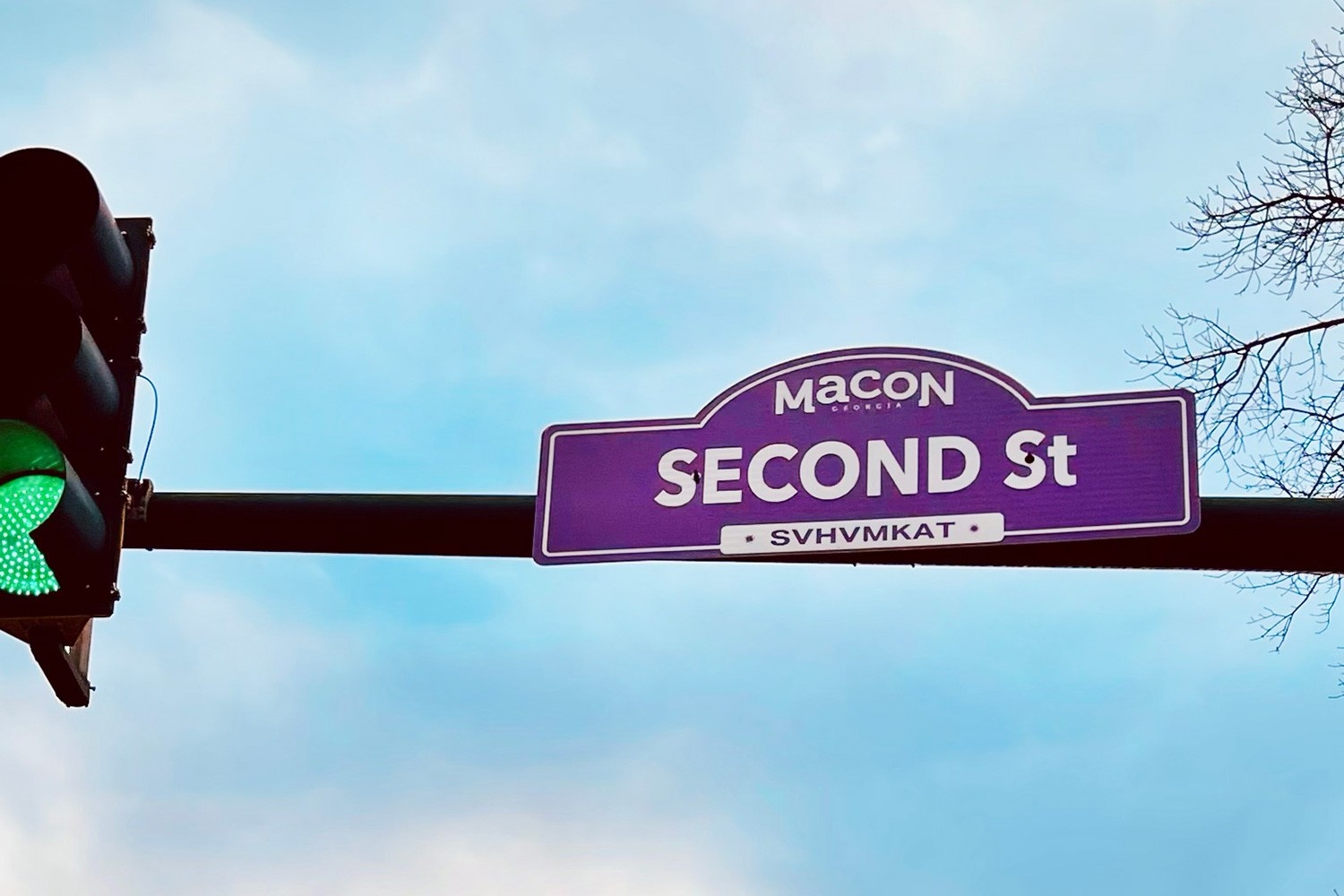
A renamed street sign in Macon, Georgia. Courtesy of Visit Macon.
Removing the Colonial Legacy
Although the movement to reclaim Indigenous place names has been going on for decades, it was in 2015 that it fully stepped into the spotlight when President Barack Obama federally restored the name Denali to North America’s highest peak. It was the long-awaited result of a campaign stretching back to the 1970s and a crucial step in acknowledging Indigenous names not just at the city, county, or state level, but at the highest level in the land: federal.
But while Denali may be the best-known example, it’s far from the only one. Another mountain in Yellowstone National Park, with its fraught Indigenous history, now bears the name First Peoples Mountain. In Boise, Idaho, a local park was renamed Eagle Rock Park to honor the region’s Shoshone, Bannock, and Northern Paiute people. In the Great Smoky Mountains, the Eastern Band of the Cherokee Indians requested the name change of Clingman’s Dome, the highest peak in the region; it is now known as Kuwohi.
“This is a significant and powerful way for destinations to demonstrate respect and foster a deeper, more accurate understanding of their local history,” says Sherry L. Rupert (Paiute/Washoe), CEO of the American Indian Alaska Native Tourism Association (AIANTA). “We strongly encourage destinations to work directly with their local tribes to incorporate Indigenous languages and histories into their public spaces.”
From a tourism perspective, there’s a growing interest in learning more about Indigenous places as well. According to AIANTA, American Indian, Alaska Native, and Native Hawaiian-owned hospitality businesses contribute over $11 billion in annual sales to the nation’s tourism and hospitality sector.
But the movement is also coming at a crucial point in history, as the Trump administration seeks to erase Indigenous history from federal websites, national landmarks, and institutions. At the start of his term in January 2025, Trump signed an executive order reversing Obama’s Denali decree, restoring the name Mount McKinley. Despite the order, the Alaskan government still recognizes Denali as the official name, which it has done since 1975. By enshrining Indigenous names at the state and local level, beyond federal reach, the past is preserved beyond the whims of a single administration.
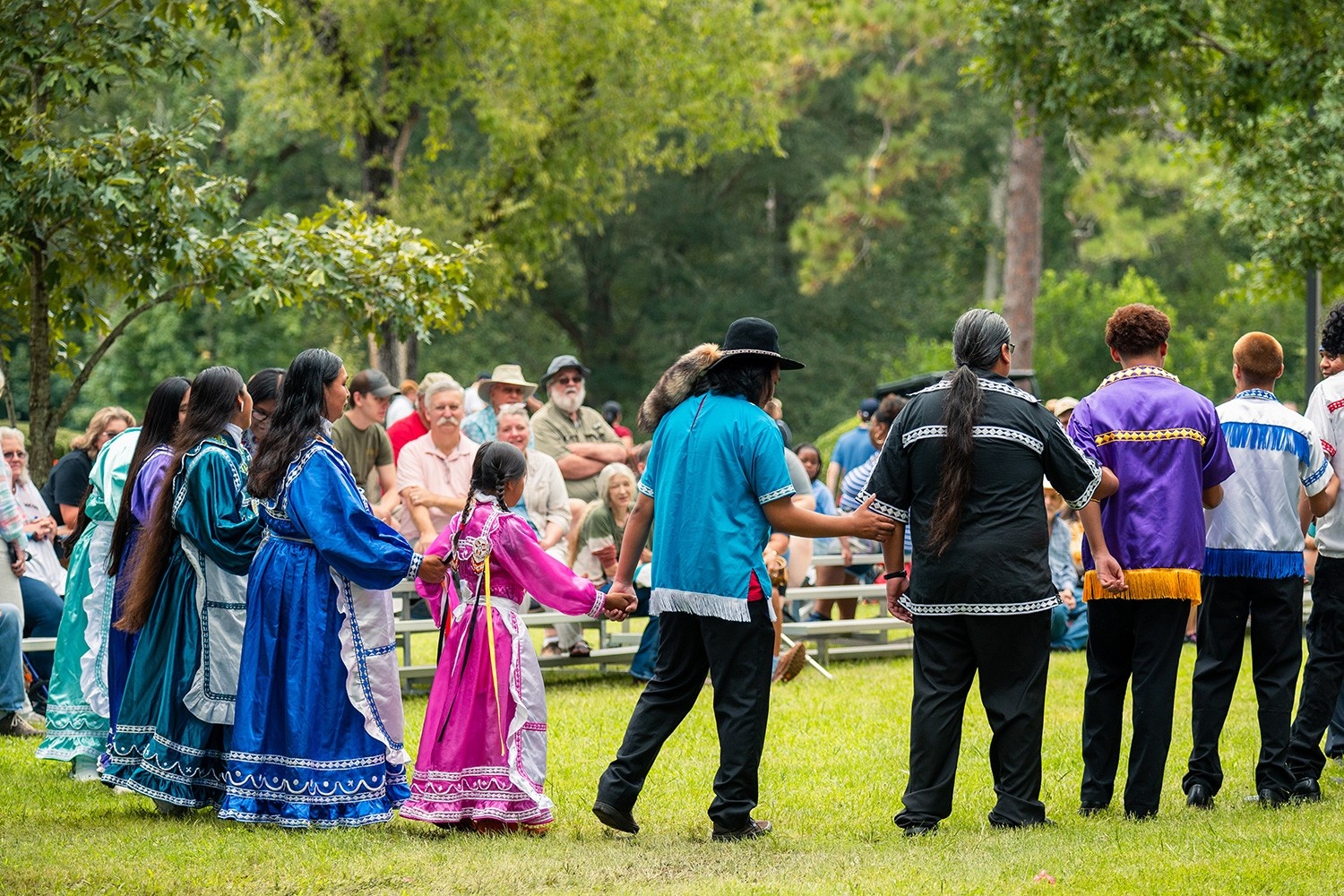
Muscogee gather at Ocmulgee Mounds for an annual celebration. Courtesy of Visit Macon.
Restoring Erased History
From Alaska to Wyoming, the western United States is where many of these grassroots efforts to reclaim place names have come to fruition or taken off. But the movement is spreading, extending into the Southeast, with its legacy of forced removal of tribes on the Trail of Tears.
One of the cities leading the way in reconnecting with its tribal roots is Macon, Georgia. Known for its cherry blossom festival and ties to music legends like Otis Redding and Little Richard, the city has been working to uplift and highlight its Indigenous history, which dates back 12,000 years. This vast legacy centers around the Ocmulgee Mounds. Set on the outskirts of town, this National Historical Park is home to great, rounded ceremonial mounds, burial chambers, and other structures — the remains of a thriving city and civilization.
The park is currently in the middle of a statewide push for national park status, which, as of this writing, is being considered by Congress. This would make it the first national park in the nation to be co-managed by a removed tribe — the Muscogee (Creek) people, who were pushed west in the 1800s to Oklahoma.
Macon’s collaboration with the tribe doesn’t end there. In early 2023, the tribal flag was permanently raised over Macon City Hall, and, in 2025, several downtown street signs were redesigned to include both the English and Muscogee (Creek) names.
“It originated from a trip early on to Oklahoma,” says Gary Wheat, President and CEO of Visit Macon. “[We saw] their street signs, which feature the street name in English and also the Muscogee (Creek) translation. I immediately said, ‘We have to do this in some capacity.’”
“Having the bilingual signs in downtown Macon serves as a reminder that today’s generation has been preceded by other people and cultures before. Many of the roads throughout Georgia were built upon established trading routes of the Muscogee people,” says Tracie Revis, Director of Advocacy for the Ocmulgee Park Initiative. “As a citizen of the Nation, I enjoy seeing the words and am encouraged by my ancestors’ resilience to keep the language alive, even when we were forced from our homelands.”
“It’s very much something that we honor, because it does bring a little bit of the Muscogee (Creek) people back to their homeland,” says Wheat. “Macon does not exist without the Muscogee people.”
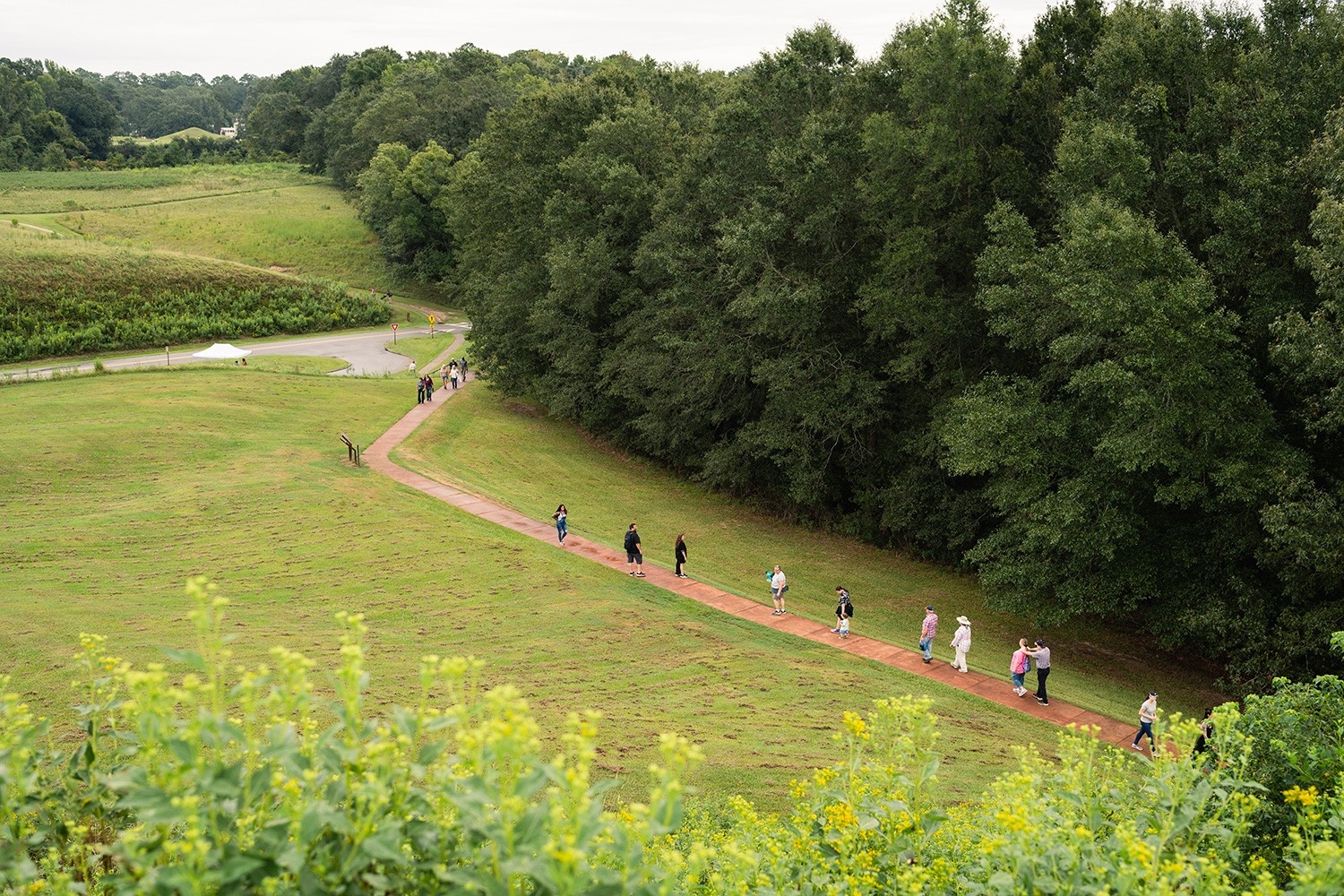
People visiting Ocmulgee Mounds National Historical Park. Courtesy of Visit Macon.
The Importance of Place
In the current political climate, these connections with Indigenous tribes are an essential way to preserve history. From Macon’s street signs to markers around Bde Maka Ska sharing more about the lake’s Dakota legacy, these types of signage educate visitors and locals on the significance of these locations to the Indigenous people. It also presents an opportunity for conversation about why the name was changed and why it matters.
But not all efforts have succeeded. For 20 years, there have been calls to rename South Dakota’s Custer State Park due to the namesake colonel’s brutality against the Lakota and Great Plains tribes. Legislation to change the name to Elk Song State Park was rejected by the Republican majority in South Dakota’s Senate State Affairs Committee in 2022. Likewise, the Lakota have called for Devil’s Tower in Wyoming to be renamed since 2014, citing the title’s offensive nature and the landmark’s significance to over 20 tribes.
As Indigenous history is scrubbed from national parks like Muir Woods and the National Museum of the American Indian is under “comprehensive internal review,” it’s more important than ever for destinations to forge ties with tribal leaders. Renaming and adding additional signs requires collaboration and money, but is worthwhile, says Rupert.
“By acknowledging the past, this process is an opportunity to acknowledge the Indigenous history of the land,” she says. “It can be a powerful act of reconciliation and education, helping to correct historical inaccuracies and ensure that the Indigenous presence is not erased but honored and celebrated.”
If you notice names and signs changing around you, you might think: does a name really matter? In this case, it represents an entire history reclaimed.
How to Support Indigenous Businesses in Your Travels
Travelers looking to support Indigenous tribes on their travels can use NativeAmerica.travel as a resource. Operated by the AIANTA, it contains listings of Indigenous-owned businesses across the country, including hotels, tour operators, restaurants, and museums.
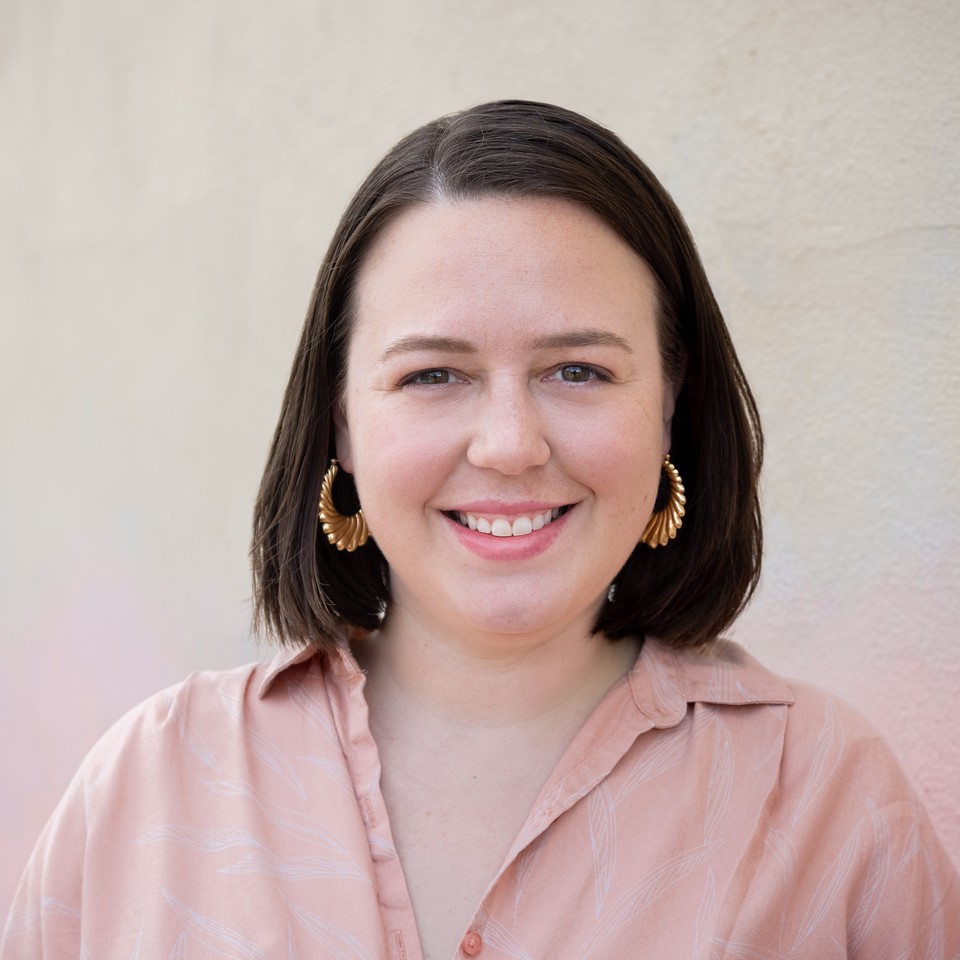
Caroline Eubanks is an Atlanta, Georgia-based Lowell Thomas award-winning writer and author of This Is My South: The Essential Travel Guide to the Southern States and A Boozy History of Atlanta: People, Places & Drinks that Made a City. Her work has appeared in Lonely Planet, the Chicago Tribune, Architectural Digest, the Washington Post, and VinePair. Follow her travels in the South and beyond (plus lots of dog photos) on Instagram at @cairinthecity and through her website.
North Stars: Diversity & Inclusion, Heritage Value, Wildlife Ecosystems


